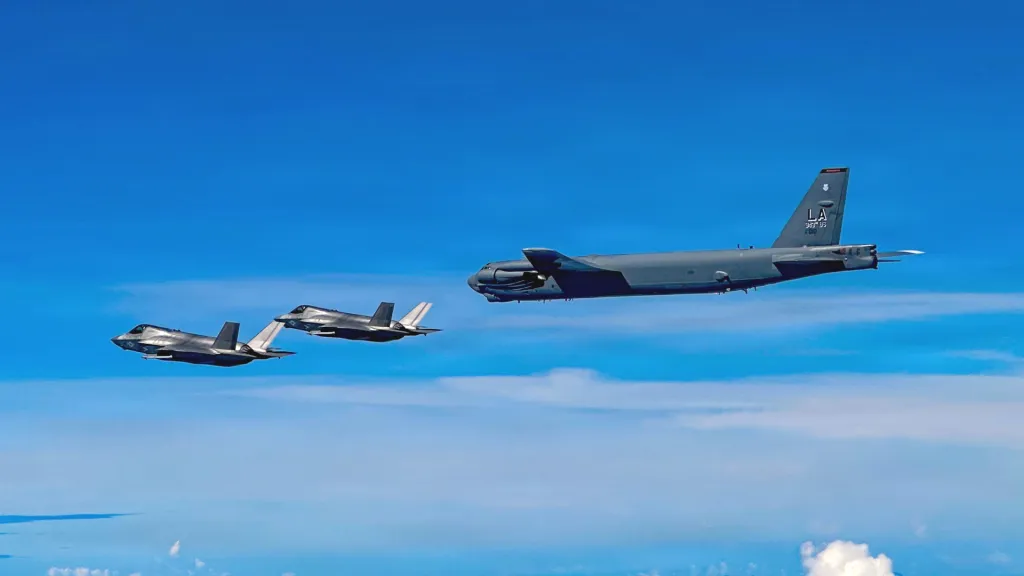The U.S. Navy’s supercarrier USS Gerald R. Ford and at least a portion of the rest of its strike group have been ordered to Latin American waters. This represents a new and especially significant deployment of U.S. forces into the Western Hemisphere amid a steady escalation in the scale and scope of ostensible counter-narcotics operations. Strikes on alleged drug-smuggling boats have now become routine, and the possibility that the campaign could extend to targets on land, particularly in Venezuela, continues to grow.
Sean Parnell, the Pentagon’s top spokesperson, made the unexpected announcement about Ford, which is currently on a scheduled deployment in the eastern end of the Mediterranean Sea on a scheduled deployment.
“In support of the President’s [Donald Trump] directive to dismantle Transnational Criminal Organizations (TCOs) and counter narco-terrorism in defense of the Homeland, the Secretary of War [Pete Hegseth] has directed the Gerald R. Ford Carrier Strike Group and embarked carrier air wing to the U.S. Southern Command (USSOUTHCOM) area of responsibility (AOR),” Parnell said in a statement. “The enhanced U.S. force presence in the USSOUTHCOM AOR will bolster U.S. capacity to detect, monitor, and disrupt illicit actors and activities that compromise the safety and prosperity of the United States homeland and our security in the Western Hemisphere. These forces will enhance and augment existing capabilities to disrupt narcotics trafficking and degrade and dismantle TCOs.”
Ford, the Navy’s newest carrier, currently has a full air wing embarked, which includes F/A-18E/F Super Hornet fighters, EA-18G Growler electronic warfare jets, E-2D Hawkeye airborne early warning and control planes, C-2A Greyhound Carrier Onboard Delivery (COD) aircraft, and MH-60R/S Seahawk helicopters. The rest of its strike group includes four Arleigh Burke class destroyers – USS Winston S. Churchill, USS Bainbridge, USS Mahan, and USS Forrest Sherman – and likely at least one attack submarine.
USNI News has reported that it is currently unclear which of Ford’s escorts may accompany it to the SOUTHCOM AOR, citing an unnamed source. The outlet noted that, at least as of Monday, the USS Forrest Sherman and USS Mitscher were operating independently in the Red Sea and Arabian Sea, respectively
It is likely to take Ford at least a week to get back across the Mediterranean and then the Atlantic Ocean. Where exactly within the SOUTHCOM AOR the carrier and elements of its strike group might take up station remains to be seen.
Regardless, just pulling Ford from a scheduled deployment is a major development and follows an already substantial build-up of U.S. naval, air, and other assets in and around the Caribbean. As of last week, approximately 10,000 U.S. personnel, in total, were forward deployed in the region. Fox News has reported that the Navy is now set to see roughly 14 percent of its combat fleets operating within SOUTHCOM’s AOR.
The Navy’s aircraft carrier strike groups, in general, are at the very top of the U.S. military’s power-projection assets, offering immense capability to exercise control over surrounding sea and airspace, as well as to launch strikes on targets on the water and ashore hundreds of miles away in any direction. They also provide huge floating bases that can be utilized in other ways, including as launch points for major special operations forces missions.
Even if only a portion of the Ford Carrier Strike Group ultimately deploys to the SOUTHCOM AOR, it would still represent a major boost in capabilities and operational capacity in the theater. There are already multiple Arleigh Burke class destroyers, as well as a Ticonderoga class cruiser, in the region that could also join with Ford and its escorts, including to help provide protection for the carrier. The overall threat picture is not high, though one still does exist. It is worth noting that carrier strike groups also train heavily before deployments to be a deeply integrated, singular fighting force, something that would not exist with warships already in the Caribbean. Still, this combination of naval forces would likely be more than enough to suffice in this scenario.
Altogether, Ford‘s impending arrival can only signal a new and substantial escalation in U.S. operations in the region. As noted, American forces are now regularly striking small boats alleged to be involved in drug smuggling. Just earlier today, Secretary of War Hegseth announced the ninth such strike known to have occured since the start of September. To date, seven of the strikes have targeted boats in the Caribbean, while two more have occured in the Eastern Pacific Ocean.
All of this also comes amid U.S. government efforts to put particular pressure on Venezuelan strongman Nicolas Maduro. Just yesterday, Air Force B-1 bombers conducted a show of force close to Venezuela’s coast. Last week, Air Force B-52 bombers, accompanied by U.S. Marine Corps F-35B Joint Strike Fighters, conducted a similar mission that officials later described as a “bomber attack demonstration.”

There has been a steady drumbeat of reports in recent weeks pointing to the growing possibility of direct action of some kind against Maduro’s regime. President Trump said on Wednesday that his administration was moving to target drug cartels on land, though he did not elaborate on what that might entail or where such operations might occur. He also confirmed last week that he had authorized the CIA to engage in covert operations against the Venezuelan government. Maduro has been under indictment in the United States since 2020 for drug trafficking and other charges, and American authorities currently have a $50 million bounty out for his capture.
While it will take some time for the elements of the Ford Carrier Strike Group to arrive in Latin American waters, that they are on their way already signals U.S. operations in the region are entering a new phase.
Contact the author: [email protected]
